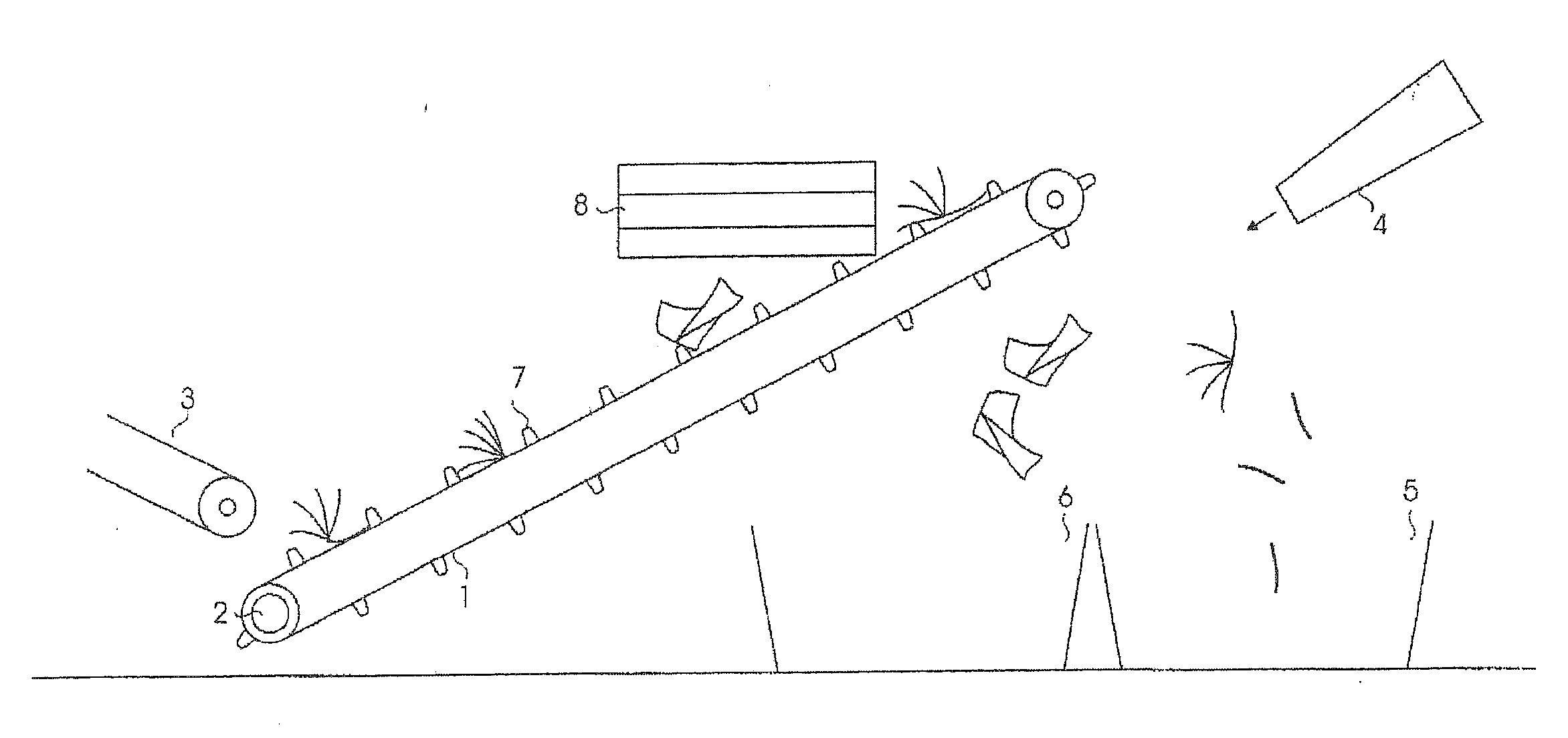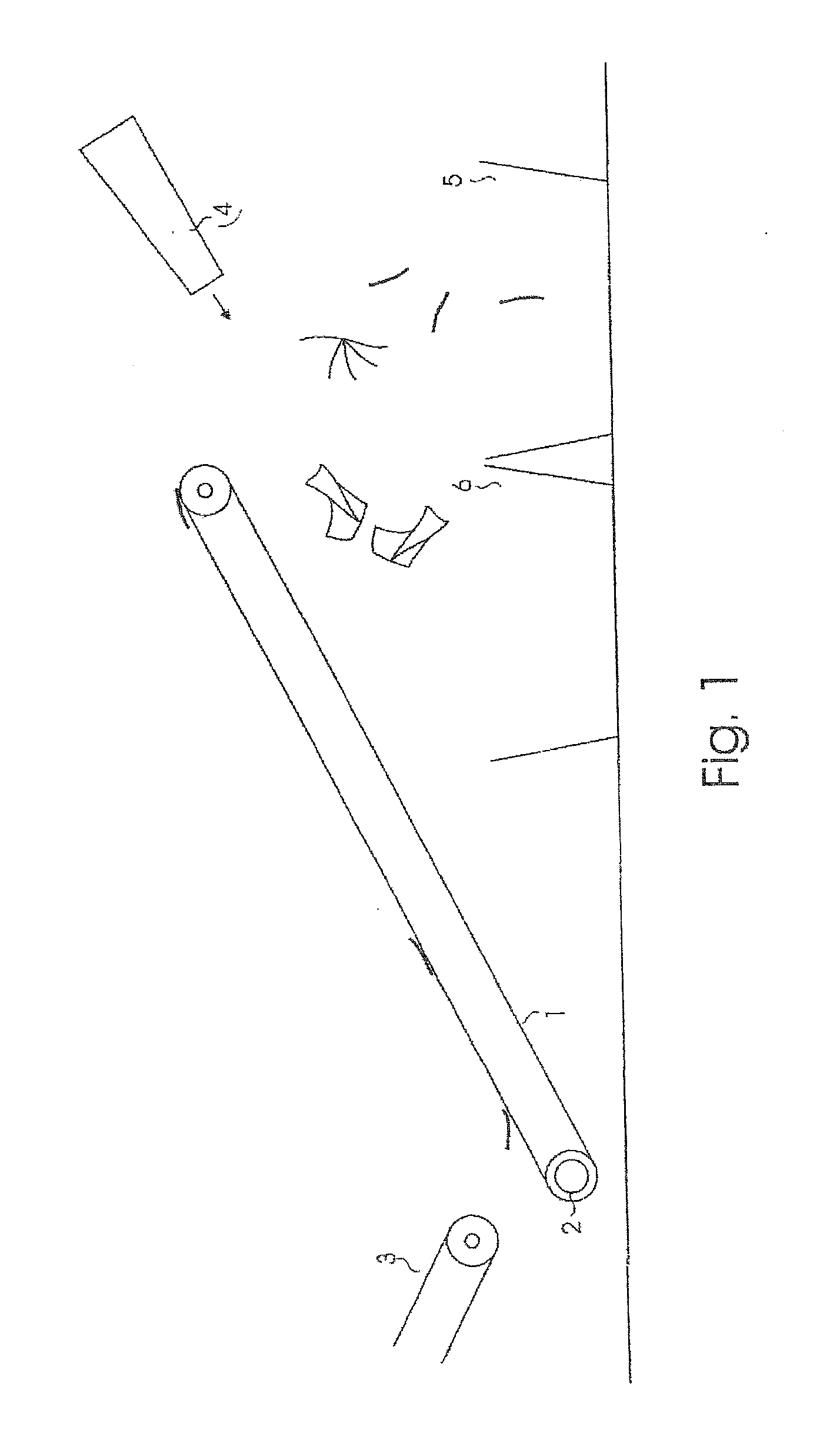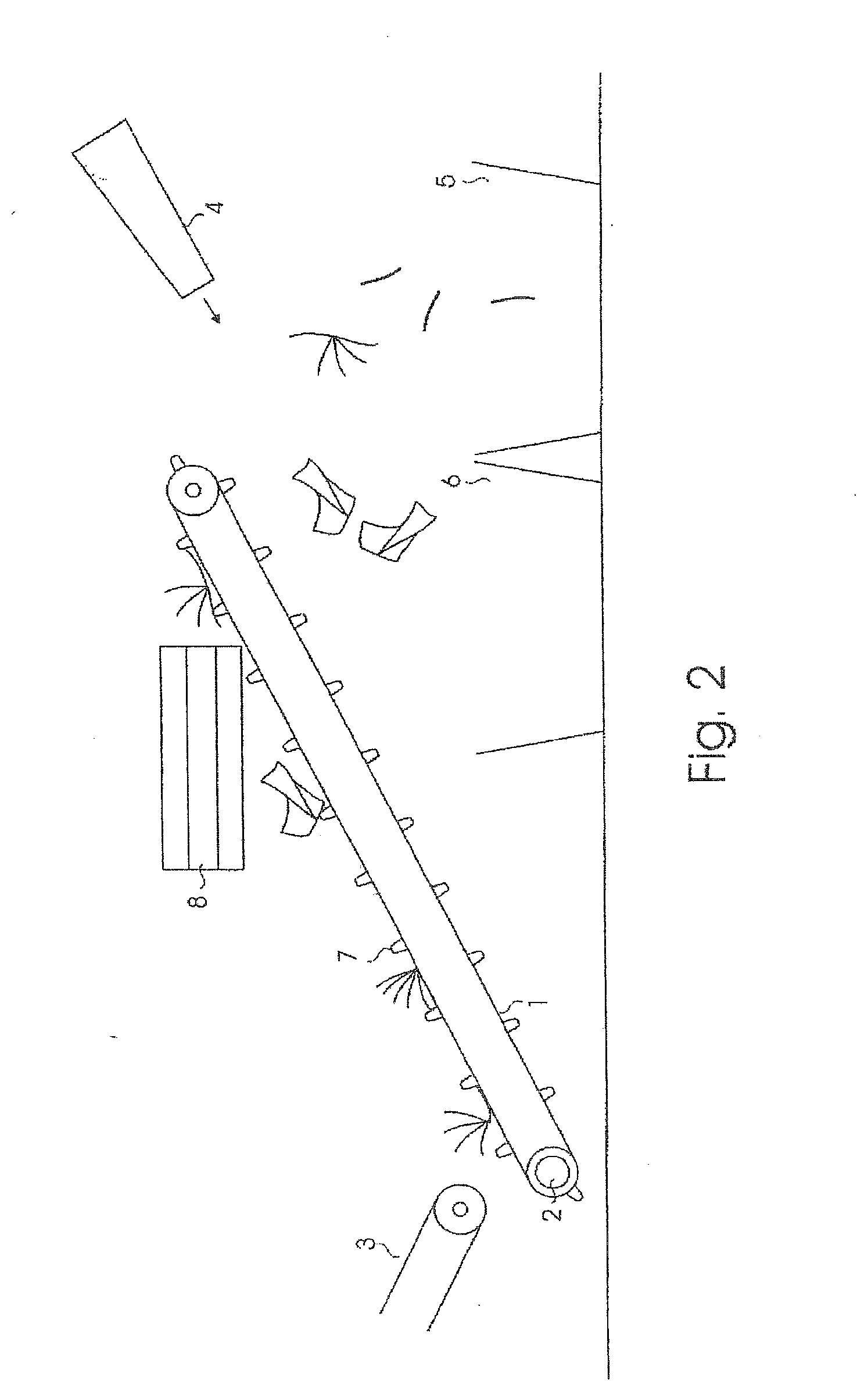Structure and working method for the sorting of waste products
a technology for working methods and waste products, applied in the direction of sorting, gas current separation, solid separation, etc., can solve the problem of increasing the chance of partially opening, and achieve the effect of increasing the surface area
- Summary
- Abstract
- Description
- Claims
- Application Information
AI Technical Summary
Benefits of technology
Problems solved by technology
Method used
Image
Examples
second embodiment
[0026]FIG. 3 depicts the invention for separating folders, newspapers and magazines similar to the layout depicted in FIG. 2. In this embodiment, however, at the end of conveyor belt 1, an air knife 9 is positioned. The air knife 9 generates a powerful, narrow, and upwardly pointed stream of air over a width nearly equal to the width of conveyor belt 1. This causes folders, newspapers and magazines to tumble when they fall of off the end of conveyor belt 1. Especially for newspapers, this tumbling motion further unfolds the newspapers, increasing their surface area so that a large part of these newspapers will be blown by fan 4 into the container (bin) 6. In the layout depicted by FIG. 3, the air knife 9 is connected to a stopcock (airflow switch or regulator) 10 and a control mechanism 11, which regulates the airflow, in short bursts, emitted / discharged from air knife 9. From these directed bursts, only a part of each folder, newspaper or magazine is struck, increasing the tumbling...
third embodiment
[0027]FIG. 4 depicts the layout of the present invention for separating folders, newspapers and magazines. This embodiment is similar to the embodiment shown in FIG. 3, with the addition, to the control mechanism 11, of the described detector 12, through which steering mechanism 11 can detect when a folder, newspaper or magazine has reached the end of conveyor belt 1. The steering mechanism 11 can then instruct the air knife 9 to emit a short pulse at the moment that the leading or trailing edge of the object (folder, newspaper or magazine) trips the detector 12. The folder, newspaper or magazine struck by the blast of air on the front or rear end will cause additional intensified tumbling, and cause additional amount of newspaper to be blown by the fan 4 into the container (bin) 6.
fourth embodiment
[0028]FIG. 5 depicts a layout of the apparatus of the present invention for separating folders, newspapers and magazines. This embodiment is similar to the embodiment of FIG. 4, with the addition of a control mechanism 11 for a series of in-line detectors 12a, b, c, and d, through which steering mechanism 11 can detect when a folder, newspaper or magazine has reached the upper end of conveyor belt 1. The air knife consists of a series of the previously described nozzles 9a, b, c, and d arranged in a line, through which the steering mechanism 11 can regulate pulsed air at such time that the folder, newspaper or magazine leading or following edge will be struck by the air discharged therefrom. This will result in a minimum of compressed air causing maximized tumbling, and subsequently an even larger amount of newspaper being blown by the fan 4 into container the (bin) 6.
PUM
 Login to View More
Login to View More Abstract
Description
Claims
Application Information
 Login to View More
Login to View More - R&D
- Intellectual Property
- Life Sciences
- Materials
- Tech Scout
- Unparalleled Data Quality
- Higher Quality Content
- 60% Fewer Hallucinations
Browse by: Latest US Patents, China's latest patents, Technical Efficacy Thesaurus, Application Domain, Technology Topic, Popular Technical Reports.
© 2025 PatSnap. All rights reserved.Legal|Privacy policy|Modern Slavery Act Transparency Statement|Sitemap|About US| Contact US: help@patsnap.com



